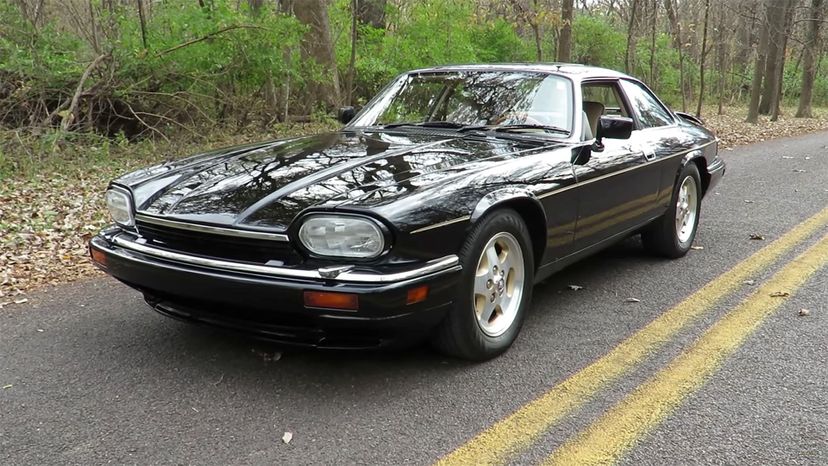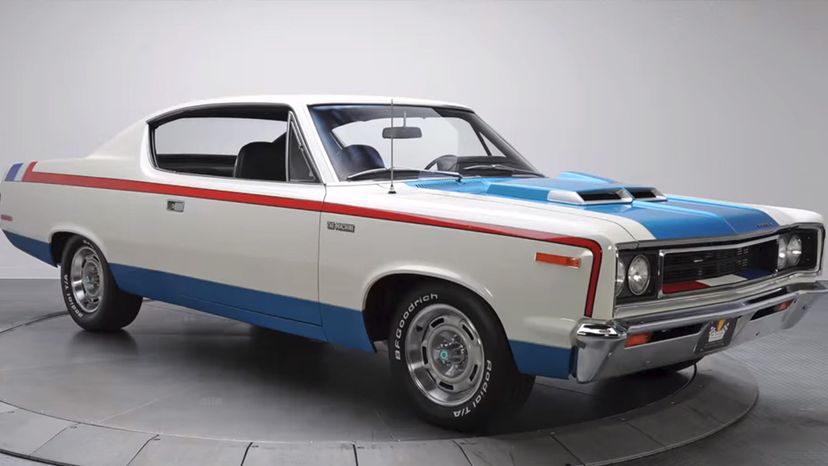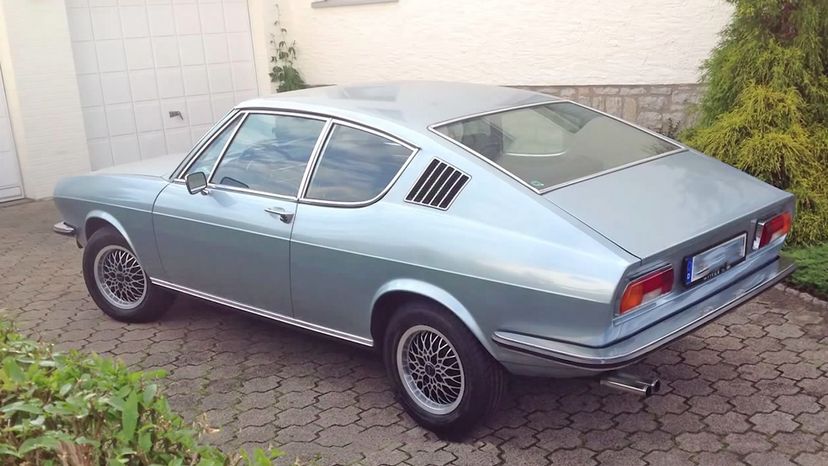
About This Quiz
The 1970s was a memorable decade for cars, both good and bad. The decade started off in style but soon faced a crisis with an embargo put in place by oil-exporting countries driving up gas prices and reducing supplies around the world. In America, big gas-guzzling cars that struggled to get 10 miles per gallon suddenly fell out of favor. New government regulations for safety and exhaust emissions would soon crimp performance and put an end to muscle cars. Compact and subcompact models became popular overnight.
Despite the dour circumstances, the 1970s gave us an amazing assortment of cars, not only from American carmakers, but from abroad as well. Japanese cars started to make a huge impact in the United States. European manufacturers continued with a wide range of models, from innovative small cars to high-end luxury coupes and ultimate sports cars.
Despite higher fuel prices, American drivers didn't give up on their big cars entirely. For example, did you know that the 5,300-pound Lincoln Continental Mk. IV luxury coupe had its best sales year ever in 1973, a year when gas prices doubled?
This quiz will show you cars from all over the globe, including some you've never seen before, and some practically guaranteed to stump even the most dedicated car enthusiast. Take your time, follow the clues and give it your best shot.
Good luck!

A year after Rolls-Royce introduced its 1965 Silver Shadow sedan, swanky coupe and convertible models followed. They shared the Silver Shadow name until 1971, when both were badged "Corniche.†The name came from a twisty road running above the Mediterranean between Nice France, and Monte Carlo, Monaco. The Corniche coupe (shown) was dropped after 1981, while the convertible lived until 1996 with little change - an incredible 30-year run.

After stopping production of its revered E-Type sports car in 1975, Jaguar replaced it in the line with a larger, more luxurious coupe called the XJ-S. It was based on the XJ sedan's chassis and initially powered by a V-12 engine. A lower-priced six-cylinder model joined the V-12 in 1983, and a convertible model arrived in 1988. By the time Jaguar ended XJ-S production in 1996, some 115,000 had been made.

There were two very different Ford Granadas in the 1970s, this one was made in the U.S., while Ford of Europe built the other in Germany and England. The American car was larger but less sophisticated, having used chassis components related to the Falcon model from the 1960s. By the way, if you thought it was the Diplomat, there was a Diplomat in Europe, made by former GM subsidiary Opel.
Advertisement

Made from 1976 until 1986, Jeep's CJ-7 was one of the most popular four-wheel drive off-road SUVs of the period. Its 93.3-inch wheelbase seems short today but was more than 10 inches longer than the CJ-5 model's, giving it more interior room. Owned by AMC at the time, Jeep offered that manufacturer's inline-six-cylinder engines and 304 cubic inch (5.0-liter) V8 as options.

Since its inception in 1974, the Volkswagen Golf (called ‘Rabbit' in North America in the 1970s and 1980s) has gone from strength to strength. In fact, Volkswagen's very translation, ‘people's car,' easily moved from the aging Beetle to this modern hatchback. Currently in its seventh design generation, the Golf is a sophisticated yet affordable automobile that also offers lots of fun in the GTI and R models.

Introduced in 1969 as a 1970 model, and produced until 1977, the Maverick was a popular compact 2- or 4-door sedan. It offered a range of engine options, the largest of which was a 302 cubic-inch (5.0-liter) V-8.
Advertisement

Rolls-Royce produced this big, imposing looking luxury coupe from 1975-1986. It was designed by the legendary Pininfarina design house in Italy, yet named for a region in southern France.

Earlier in this quiz, you saw this car's successor, the Lincoln Continental Mk. V. This is the Mk. IV, which replaced the Mk. III (of course) in 1972 and continued until 1976. Nearly 280,000 of these huge luxury coupes were made. Its best year, quite astonishingly, was 1973, when an oil embargo caused rising gas prices, gas shortages and long lines at the filling station.

The Continental Mk. V was the flagship model of Ford's Lincoln luxury car line from 1977-1979. It was based on the same chassis as its immediate predecessor, the Mk. IV. It used a huge 460 cubic-inch V-8 engine in 1977 and 1978, and then a somewhat less huge 400 cubic-inch V-8 in it final year. Ornate styling included an "opera window†and "Designer Editions.â€
Advertisement

American Motors Corporation manufactured the subcompact Gremlin from 1970 to 1978. Most were six-cylinder economy models, and the "Gremlin X†dress-up package was a popular option. A 5.0-liter V8 was offered from 1972-1976, giving the Gremlin some real get-up-and-go that left competitors like the Ford Pinto and Chevy Vega in the dust.

Believe it or not, the big 1969 Pontiac Grand Prix was "downsized†from the previous version, riding on a slightly longer version of the brand's midsize Tempest chassis. The standard engine was a 400 cubic-inch V8. The "smaller†Grand Prix was a hit, selling in far higher numbers than the earlier versions.

Part of the Volvo 200 series, the 262C was a special edition coupe designed with the help of Italian styling house, Bertone. It was built from 1978 and 1981. The design was influenced by the much larger 1972-1976 Lincoln Continental Mk. IV.
Advertisement

The 1970 Dodge Charger was the third year in the body style before an all-new body debuted for 1971. It could be equipped as a mild cruiser with a standard 318 cubic-inch (5.2-liter) V-8, or an all-out muscle car with 375- or 390-horsepower 440 cubic-inch V-8 options. At the top was the 426 cubic-inch Hemi V-8 with 425 horsepower. (A highly customized version is shown.)

A stalwart of the Chevy pickup fleet in the 1970s, the C30 offered a dual rear-wheel option, giving it the nickname "dualie.†Combined with the crew cab option, it could easily seat six people and tow a heavy trailer.

BMW's 1602 (for 1.6-liter engine, two-door body), introduced in 1966, began a sport sedan dynasty, but not until a version with a larger 2.0-liter engine in 1968 turned it into the 2002 did it really wake up. Since the sporty 1602 ti model (shown) did not meet U.S. emissions standards, the more powerful but identical looking 2002 ti (and later, the even hotter 2002 tii) stepped in with more power. It was succeeded by the BMW's first 3 Series model in 1975.
Advertisement

To be more competitive in NASCAR racing, Plymouth made a special version of its Road Runner model that was more aerodynamic with a low, pointy nose and a tall rear wing. Plymouth made nearly 2,000 street versions of the Superbird, which offered a choice of 375- and 390-horsepower 440 cubic-inch V-8s or the mighty 426 cubic-inch, 425-horsepower Hemi.

In 1979, Volkswagen added a trunk to its Golf (Rabbit in the U.S. at the time) and, voila, the Jetta was born. The Jetta went on to become one of VW's best-sellers, debuting its seventh generation for 2019.

AMC broke out of its conservative mold in the late 1960s with the Javelin and AMX sporty cars, and then really let loose with the 1970 Rebel Machine, a muscle car to compete with the Chevelle SS, Pontiac GTO and Plymouth Road Runner, among others. AMC's hippie-inspired advertising tagline for the car, "Up with the Rebel Machine!†was a direct appeal to younger buyers.
Advertisement

Produced between 1977 and 1988, the Dodge Diplomat was an upmarket mid-size model based on the lower-level Dodge Aspen. Other versions were badged as Plymouth Gran Fury and Chrysler Fifth Avenue. The Diplomat and Gran Fury sedans were popular with police departments. Engine choices included a 3.7-liter inline-six cylinder and 5.2-liter and 5.9-liter V8s.

Plymouth's Duster coupe, based on the brand's compact Valiant model, was an immediate hit when introduced in 1970. With the standard six-cylinder engine, it was an economy model. The optional mid-range 318 cubic-inch (5.2-liter) V8 gave it real pep, and the Duster 340 version was a genuine muscle car with a 275-horsepower, 340 cubic-inch high-performance V8. The popular Duster lasted until 1976. (A highly customized model is shown.)

Unless you've been to Australia, you've likely never seen one of these plain-looking but popular (in Australia, that is) sedans. It's a Commodore, made by General Motors' Australian subsidiary, Holden. The company, whose long history includes making some impressive muscle cars and well-built sedans, ceased making vehicles in 2017 and now acts as an importer of GM cars from other markets. In the past, GM imported a couple of models from Australia to the U.S.: the 2004-2006 Pontiac GTO was a slightly restyled version of the Holden Monaro, and the 2008-2009 Pontiac G8 was a version of the last-generation Holden Commodore.
Advertisement

The Gran Sport badge first appeared on the high-performance version of the Buick Skylark in 1965. Later, the name was abbreviated to simply "GS†and in 1970 got the brand's largest V8, a 455 with 350 horsepower. A "Stage I†option officially bumped that up to 360 horsepower, but the actual difference was greater. The GS 455 was one of the quickest muscle cars of the period.

The Brookwood was Chevrolet's lowest-priced full-size station wagon from 1969 to 1972. The name had previously been used on a low-trim wagon model from 1958 to 1961.

This one's tricky unless you're a Brit or just a total car geek who knows every model, including non-descript hatchbacks like this 1979 Vauxhall Astra. The first version was basically the German Opel Kadett with the steering wheel on the right-hand side. Bonus fact: While Vauxhall was still part of General Motors (it's now owned by France's PSA, maker of Peugeot and Citroen), a version of the later Astra, assembled in Belgium, was exported to the U.S. and briefly sold by GM's Saturn division.
Advertisement

Kudos to you if you got this one right, since the photo shows a wildy overstyled custom version of the Italian mid-engine sports car that was made from 1971-1991. Automotive connoisseurs prefer the earlier models for their cleaner design, which, by the way, was created by an American, Tom Tjaarda while working for the Italian design firm Ghia. It's engine was American in origin, as well, the Ford 351 "Cleveland†V-8, although later versions of the engine were assembled in Australia. In the U.S., the Pantera was sold by Lincoln-Mercury dealers from 1971-1974.

The Hyundai Pony, South Korea's own first mass-produced car, was a rear-wheel-drive subcompact model produced from 1975-1990. From the late 1960s until then, the company had been building a version of the British Ford Cortina under license. In fact, a team of British engineers helped develop the Pony, and its hatchback body design came from Italy's Giorgetto Giugiaro, the same individual who designed many classic Maseratis. The Pony was sold in many countries, but not the U.S.

This is a bit of a trick question. Although sold in more than 190 countries, the Suzuki Jimny did not get to the U.S. until 1986. Remember the Samurai? That was called the Jimny SJ413 in other markets. The Samurai became hugely successful in America, but a Consumer Reports magazine review showing it could possibly roll over in sharp turns crimped sales.
Advertisement

Built for rallying, the mid-engine Lancia Stratos didn't disappoint, winning the World Rally championship for three years from 1974 to 1976. Its V6 engine came from the Ferrari Dino.

Audi made more than 30,000 of these sporty fastback coupes from 1969-1976. The 100 Coupe S was powered by a 112-horsepower 1.8-liter engine coupled to a four-speed manual or 3-speed automatic transmission. It's too bad this one never came to America.

This luxury sedan was marketed by Mazda for a brief period from 1975 to 1977, but only in Japan. In fact, it is really a sedan called the Premier built by the General Motors' Australian subsidiary, Holden. It was shipped to Japan without an engine. There, Mazda installed its innovative 1.3-liter Wankel rotary engine, which lacked enough torque to move the 3,500-pound car with any verve. Very few were made.
Advertisement

Long before Subaru became known for popular all-wheel-drive models like the Outback and Forester, it made the little FF1 Star. It's main claim to fame was that it was front-wheel drive, at a time when that was actually a rare vehicle configuration. Toyota's Corolla, for example, did not switch to front-wheel drive until more than a decade later. The Star was offered in the U.S. in 1970 and 1971.

Back when Chrysler owned French carmaker Simca (1967-1979), it sold that brand's unimaginatively named 1307 model as the Alpine in the United Kingdom and Ireland. Unless you traveled there, or New Zealand, you've likely never seen one.

First marketed in Europe as the Hillman Avenger, this small four-door family car received Chrysler branding from 1976 to 1979. From 1971 to 1973, it was sold in the U.S. as the Plymouth Cricket. This oddball Chrysler emerged from the U.S. carmaker's purchase of Britain's Roots Group in the late 1960s.
Advertisement

Introduced in 1963 and built until 1974, the MG 1100 was a sophisticated little sedan designed and built by British Motors Corporation, of which MG was part. It featured front-wheel drive, an advanced four-wheel independent suspension system and a very roomy interior. The car was built and sold under other BMC brands, as well, including Austin, Morris, Riley, Vanden Plas and Wolseley. Give yourself extra points if you recognize any of those, or that the parent company later became British-Leyland. The MG version was sold in the U.S. for a time.

Designed by the legendary Giorgetto Giugiaro, BMW's mid-engine M1 sports car was built from 1978-1981, with just 453 produced. It was the first car made by the company's Motorsports division, hence the "M.†The 3.5-liter double overhead-cam inline-six-cylinder engine made 273 horsepower and could take the M1 could to a top speed of 162 mph.